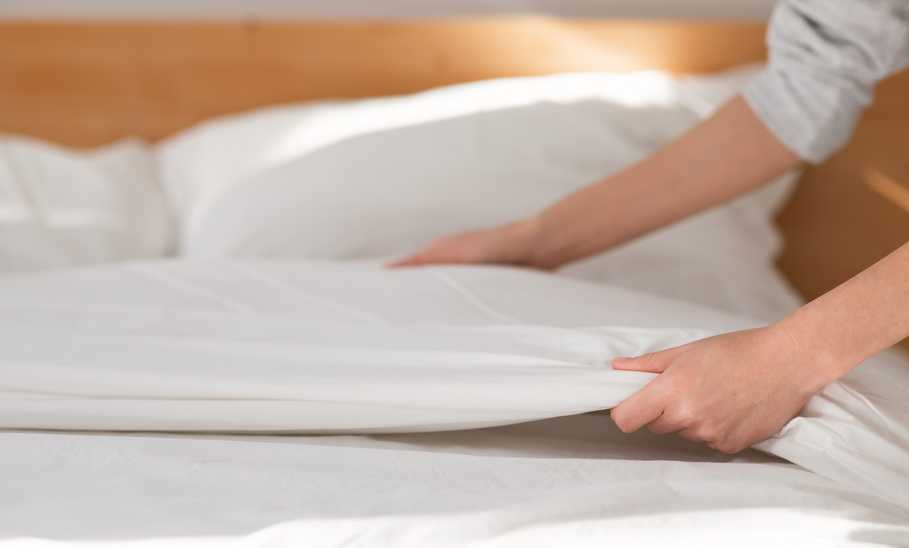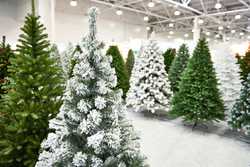Duvet vs. Comforter - What’s the Difference?

Our evaluations and opinions are not influenced by our advertising relationships, but we may earn a commission from our partners’ links. This content is created by TIME Stamped, under TIME’s direction and produced in accordance with TIME’s editorial guidelines and overseen by TIME’s editorial staff. Learn more about it.
If you’ve recently set up a wedding registry or started decorating your own place, you may have realized how overwhelming the sheer number of bedding options can be. From fitted and flat sheets, to down pillows and Euro shams, just outfitting your bed requires you to make dozens of choices. One of the most common conundrums is choosing between a duvet versus a comforter. Is there even a difference between the two—and does it really matter when it comes to bedding?
If the word “duvet” sounds charmingly French, that’s because it is, indeed, a French word. It simply translates to “down.” Duvets (often called “duvet inserts”) look like white comforters and while they are often stuffed with down, you’ll find many alternatives like cotton and synthetic fibers. Though you can use it on its own, most choose to protect it with—you guessed it—a duvet cover. The shape of a duvet cover is similar to a large bag, and usually is secured by buttons.
The outside of a duvet is commonly made from cotton, polyester, or a blend of both, for greater durability and softness. Duvets are often filled with goose down, wool, or down alternatives (for those with a feather allergy) and the materials used in the insert determine the warmth and insulation levels.
Bedding is a big deal, after all, you spend a large portion of your life surrounded by your bedding. Before investing in a duvet cover and insert, consider these pros and cons.
Selecting the right duvet cover for your needs is easier if you keep these few things in mind.

A comforter is a type of bedding filled with insulating materials, such as down feathers, synthetic fibers, or a blend of both. It’s typically sewn together with a decorative fabric cover and used for warmth and comfort while sleeping. Comforters are a popular choice for bedding due to their all-in-one nature, as they come in pre-filled and ready-to-use form—eliminating the need for separate layers or covers. Comforters offer a wide range of styles, colors, and patterns, so you can easily enhance your bedroom space, while keeping warm as needed.
Comforters are typically made using a variety of materials. The outer shell of a comforter is often crafted from cotton, polyester, or a blend of fabrics. The filling usually consists of natural materials like down feathers for superior warmth and insulation, or synthetic fibers such as polyester for a hypoallergenic and less expensive option.
Your bedding is a mainstay of your bedroom and you likely spend hours there—so it’s helpful to weigh the pros and cons before making your selection.
Choosing the right comforter may seem a little overwhelming, given all the options available. You may find it easier to start with the comforter filling, which contributes to the overall warmth. Down provides the ultimate warmth and loft, but may not work for those with a feather allergy. Synthetic fillings, such as polyester, are better for hypoallergenic choices, but may lack the breathability and warmth control down feathers offer.
Another consideration is the construction of the comforter. If you’re concerned about the filling shifting or clumping, you may prefer a baffle box or box stitching. Care and maintenance are important factors too, especially if you’re concerned about how easy it is to machine wash or if machine washing is even an option with down.
Like other bedding choices, comforters run the gamut with pricing, so you can find one for smaller budgets or more luxurious choices. There are also a variety of styles and designs, so you can pick one that works best for your decor.
Though often confused, a duvet and comforter are not quite the same piece of bedding, though both are excellent choices for layering on your bed. If you’re still unsure which one would make the best addition to your bedding, keep these main differences in mind.
Both duvet inserts and comforters come in natural and synthetic options. Down feathers are a popular choice and offer excellent control for the level of warmth with both. A duvet may give you more options since you can choose a different material for the outer cover versus the duvet insert, while you can only choose one outer material option for a comforter.
Duvet construction typically consists of a removable cover and an insert, whereas comforter construction involves a single-piece design with the outer material and filling permanently stitched together. There’s no need for a separate cover for a comforter.
Both a duvet and a comforter offer varying levels of warmth and insulation. If you want to control the temperature with your bedding, choose warmer filings, such as down, or cooler options, such as polyester.
Maintenance and care are essential considerations for both, since you likely use either a duvet or comforter on a regular basis. Duvets are easier to clean, since they offer the ease of removing the outer cover. The inserts may prove a little more challenging, if the material (such as down) isn’t machine washable or if it’s too large for your washing machine.
A comforter may have the same challenges for washing and doesn’t benefit from a removable cover either, which could be a problem for someone who prefers more frequent washing.
Both a duvet and comforter offer endless style and design choices, including patterns and colors. A duvet may offer a few more embellishments, such as buttons or zippers for enclosures, but both offer variety for design choices.
A duvet gives you the “fluffier” look, which some may prefer for a more relaxed style. And keep in mind, you can change out the style of your duvet by simply selecting a new outer cover. On the other hand, a comforter may look more sleek and easier to layer with other bedding, such as blankets.
Another style and design aspect worth considering is the size of a duvet or comforter, since they measure slightly differently. Size is important, since you may prefer something with more overhang or greater coverage area. The most common sizes for each are:
Duvet: 64 inches x 89 inches to 70 inches x 88 inches
Comforter: 66 inches x 86 inches to 68 inches x 88 inches
Duvet: 80 inches x 89 inches to 90 inches x 94 inches
Comforter: 81 inches x 86 inches to 84 inches x 88 inches
Duvet: 88 inches x 90 inches to 90 inches x 94 inches
Comforter: 86 inches x 96 inches to 88 inches X 100 inches
Duvet: 104 inches x 90 inches to 108 inches x 94 inches
Comforter: 102 inches x 88 inches to 110 inches x 98 inches
Choosing a duvet versus a comforter ultimately comes down to your preference—both offer benefits for sleeping. Here are the main considerations if you’re still deciding which to choose.

Choosing a duvet versus a comforter for your bed is purely a personal preference. A comforter is ideal for those who want to care and maintain one piece, versus both a cover and an insert for a duvet. Comforters are great for layering and simple to add to a bed right out of the bag, whereas a duvet offers a looser, fluffier look and needs both a cover and insert.
You’ll find duvets in a large number of hotels and lodging choices. This is not only most likely because of the softness and comfort duvets provide, but because duvet covers are easier to clean and maintain versus comforters.
A duvet typically provides a greater amount of fluff, simply because the insert doesn’t have as much stitching and box construction as a comforter. The inner material influences the amount of fluff, or loft, such as down feathers or a synthetic filling.
The information presented here is created by TIME Stamped and overseen by TIME editorial staff. To learn more, see our About Us page.



